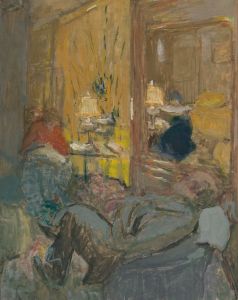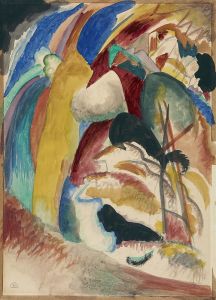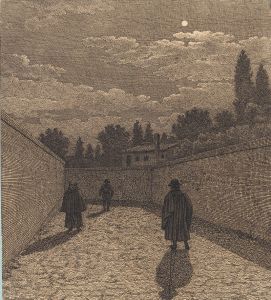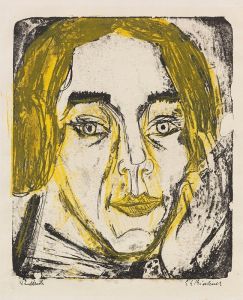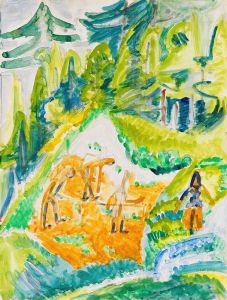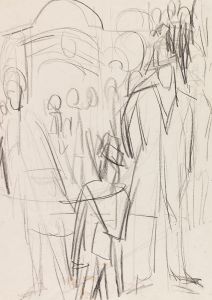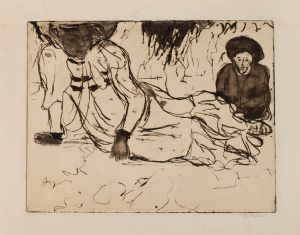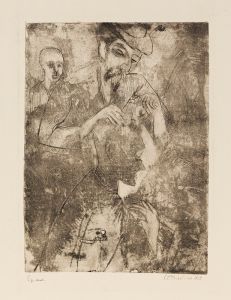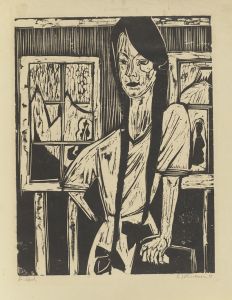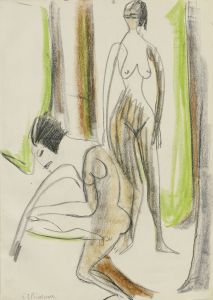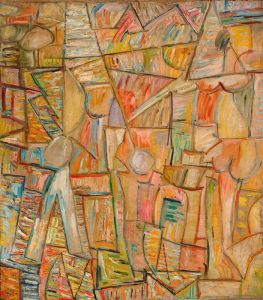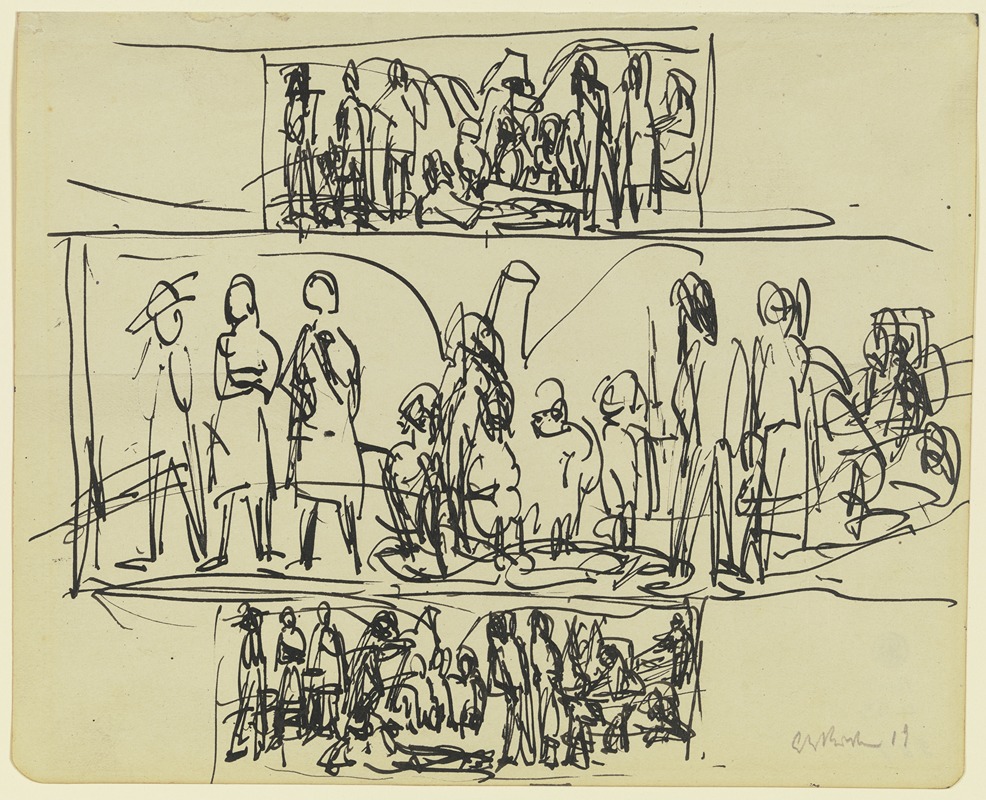
Drei Figurenkompositionen
A hand-painted replica of Ernst Ludwig Kirchner’s masterpiece Drei Figurenkompositionen, meticulously crafted by professional artists to capture the true essence of the original. Each piece is created with museum-quality canvas and rare mineral pigments, carefully painted by experienced artists with delicate brushstrokes and rich, layered colors to perfectly recreate the texture of the original artwork. Unlike machine-printed reproductions, this hand-painted version brings the painting to life, infused with the artist’s emotions and skill in every stroke. Whether for personal collection or home decoration, it instantly elevates the artistic atmosphere of any space.
Ernst Ludwig Kirchner's Drei Figurenkompositionen (translated as "Three Figure Compositions") is a work by the German Expressionist painter and printmaker, who was a founding member of the influential art group Die Brücke (The Bridge). Kirchner, active during the early 20th century, is known for his vivid use of color, dynamic compositions, and exploration of human form and emotion, often reflecting the anxieties and energy of modern life.
The painting Drei Figurenkompositionen exemplifies Kirchner's interest in the human figure and his characteristic style of distorted forms and bold, expressive brushwork. The work features three figures, arranged in a composition that emphasizes movement and interaction. Kirchner's use of exaggerated proportions and angular forms reflects his departure from traditional academic art and his embrace of Expressionism, a movement that sought to convey emotional experience rather than physical reality.
Kirchner's art was heavily influenced by non-Western art forms, particularly African and Oceanic art, which he encountered through museum collections and exhibitions in Germany. This influence is evident in the stylized and simplified forms of the figures in Drei Figurenkompositionen. The painting also reflects the artist's interest in themes of modernity, urban life, and the human condition, which were central to his work during his time with Die Brücke.
The exact date of creation for Drei Figurenkompositionen is not specified in available records, but it likely falls within Kirchner's most productive period, between 1905 and the early 1920s. During this time, he developed his distinctive style and produced many works that are now considered masterpieces of German Expressionism.
Kirchner's career was deeply affected by the political and social upheavals of his time. His work was labeled "degenerate art" by the Nazi regime in the 1930s, leading to the confiscation and destruction of many of his pieces. Despite these challenges, his contributions to modern art have been widely recognized, and his works are now held in major museums and collections worldwide.
Specific details about the current location or provenance of Drei Figurenkompositionen are not readily available. However, Kirchner's works are represented in institutions such as the Kirchner Museum in Davos, Switzerland, and other prominent art museums.
This painting, like much of Kirchner's oeuvre, serves as a testament to his innovative approach to art and his ability to capture the complexities of human experience through bold and emotive visual language.





